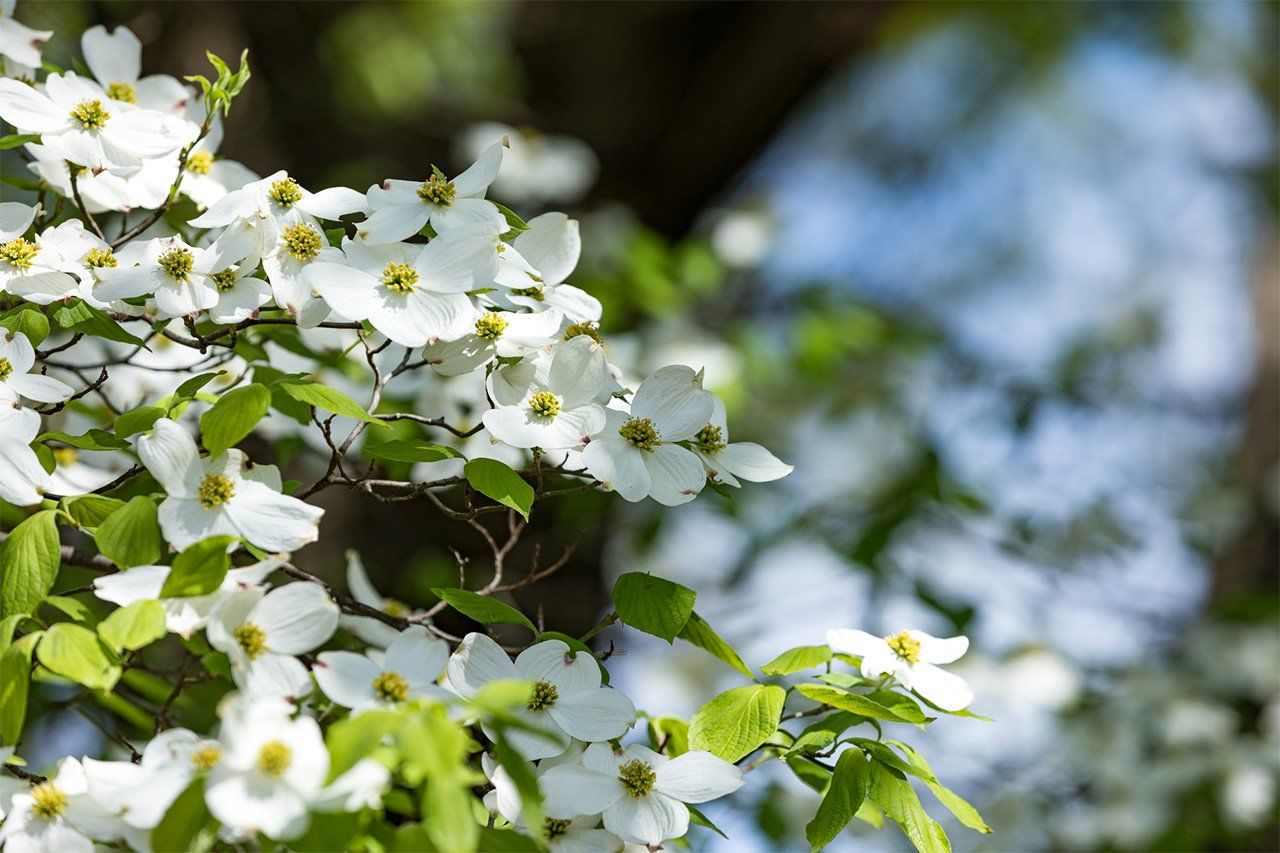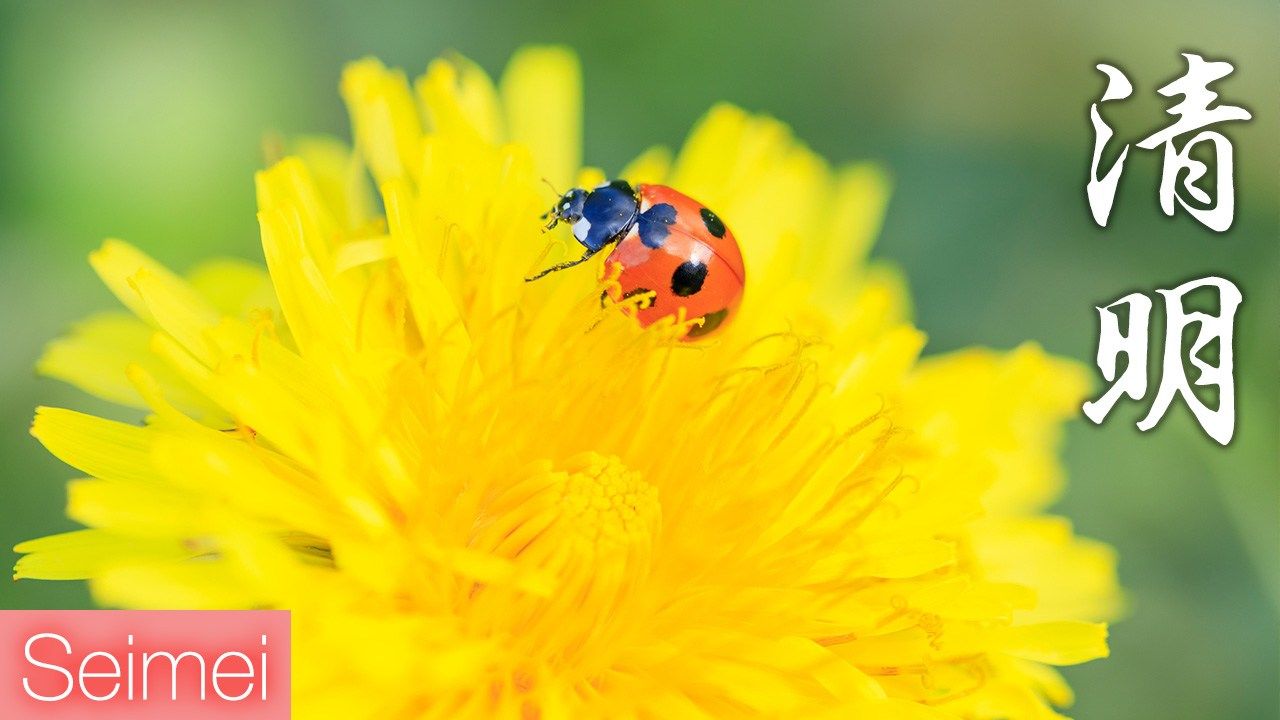
Seimei (Pure and Clear)
Culture Society Environment- English
- 日本語
- 简体字
- 繁體字
- Français
- Español
- العربية
- Русский
Seimei (Pure and Clear) is the time when spring is in full swing, and all plants and creatures seem to beam in the sunshine. The season begins around April 5 in the modern calendar. Koyomi binran (1787), a compendium on the traditional calendar, explains that the name for this season is derived from an ancient idiom, seijō meiketsu, describing a state where all things are pure and bright. Cherry blossoms, lily magnolia, and flowering dogwood are in bloom, birds are singing, and the breeze is refreshing.
This article will look at events and natural phenomena in the period roughly from April 5 to 19.
Hanaikada (Cherry Blossom Rafts)
Fallen petals from cherry trees may fall into ponds and rivers, where they gather to form “rafts.” Hanaikada or “cherry blossom raft” is a poetic allusion to late spring, a kigo (season word) used at this time of year in haiku and the tea ceremony. The Chidorigafuchi moat outside the Imperial Palace in Tokyo and the outer moat of Hirosaki Castle in Aomori Prefecture are famous for hanaikada.
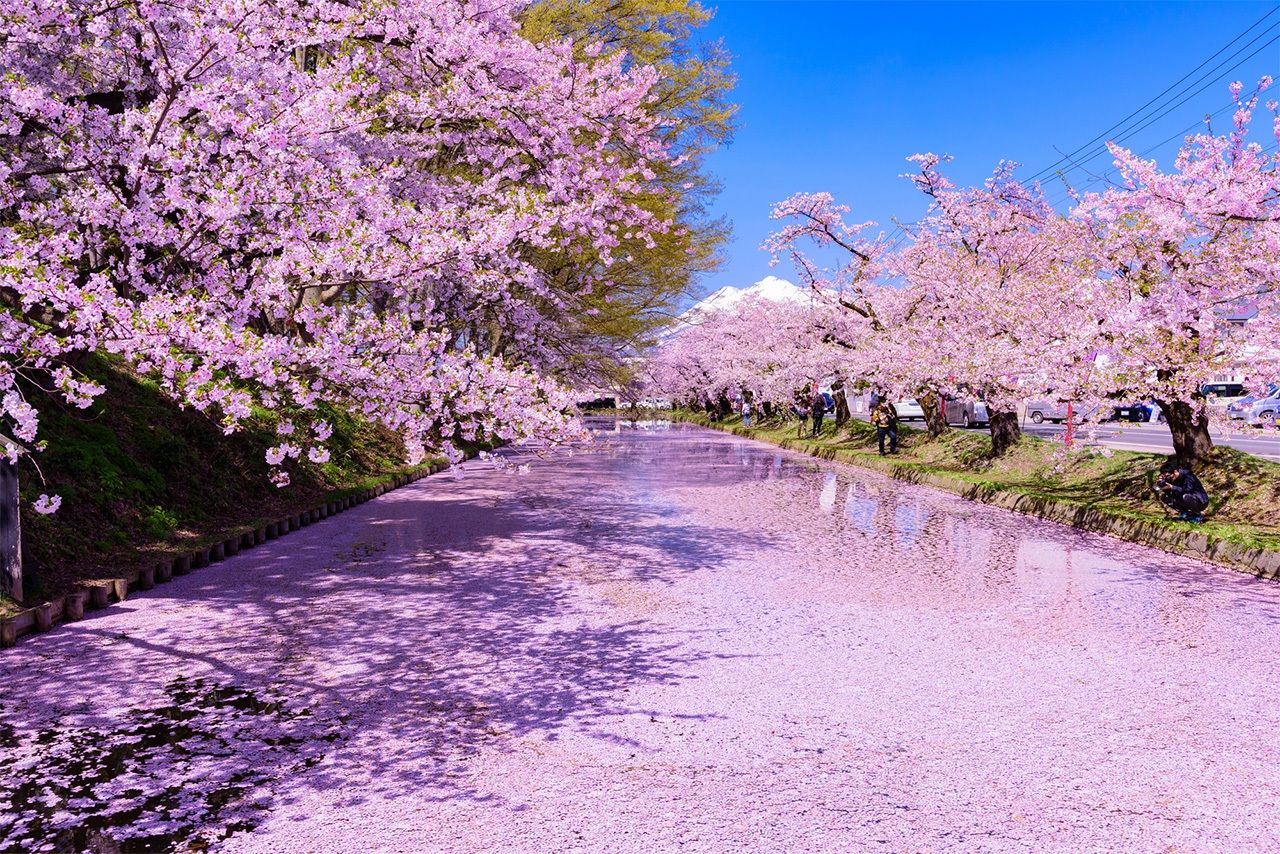
Hanaikada on the Hirosaki Castle moat during the cherry blossom festival. (© Pixta)
Hanamizuki (Flowering Dogwood)
Flowering dogwood was first sent to Tokyo from Washington DC as a return gift after Tokyo sent cherry blossom seedlings to the city in 1912. The trees, native to North America, were planted in Hibiya Park, Tokyo, before spreading across Japan. They bloom from the end of the cherry blossom season.
Hanamatsuri (Flower Festival) (April 8)
Hanamatsuri (Flower Festival) is a common name in Japan for Buddha’s birthday, also known as Kanbutsue. Temples display standing small Buddha statues decorated with flowers. Worshipers pour amacha (hydrangea tea) over the statues to “bathe” the Buddha.
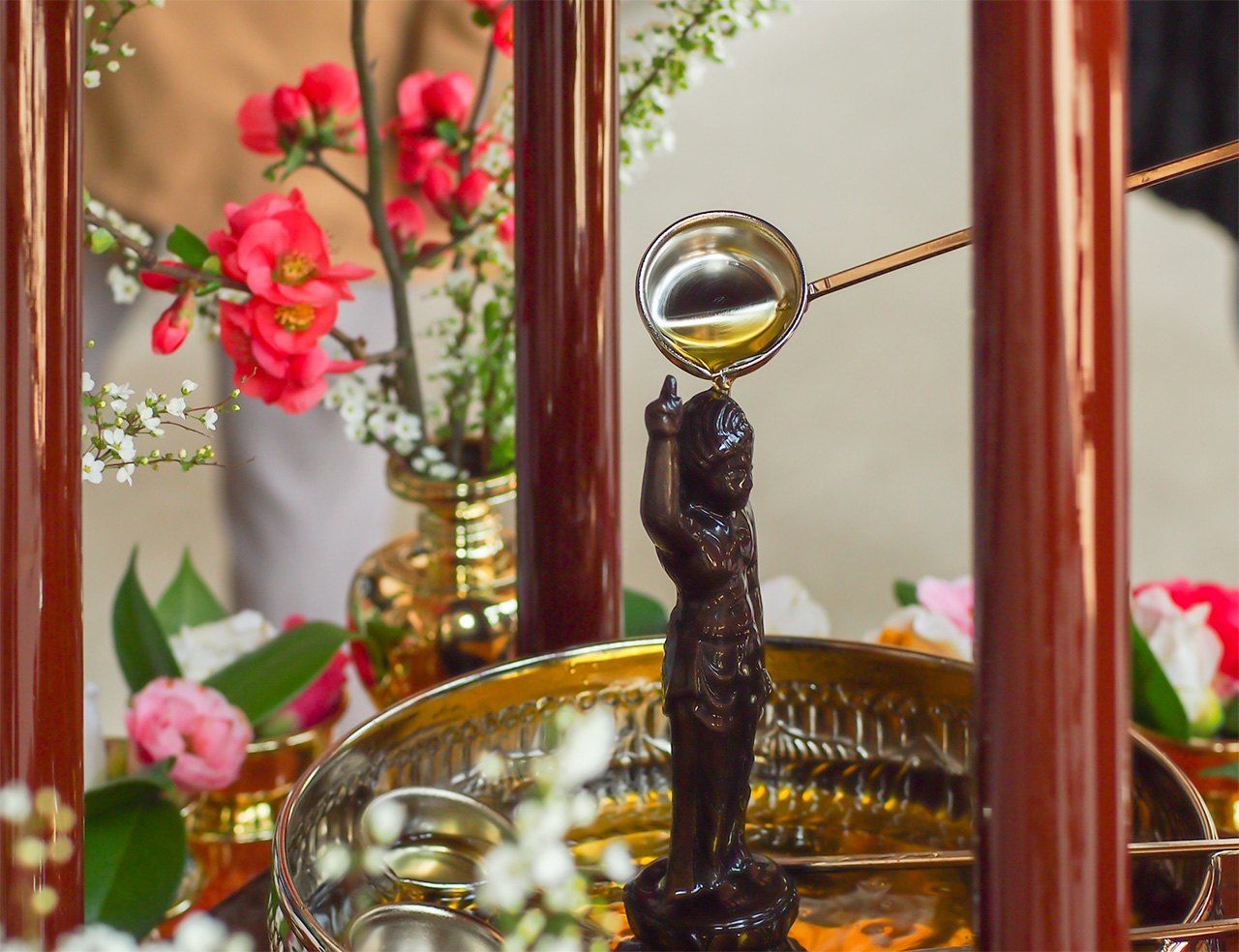
Hanamatsuri, which celebrates Buddha’s birthday. (© Pixta)
Shiohigari (Gathering Shellfish)
On king tide days, at low tide, people visit larger beaches to gather asari and hamaguri clams, using iron rakes to dig them up. This is especially popular for families with young children.
Daytime tides are larger at this time of year, making it perfect for clamming. Asari are in season in spring and autumn, so they are plump and full of flavor. They taste great steamed with sake, cooked with rice, or in spaghetti alle vongole, but the clams should be soaked in salt water to purge the sand before cooking.

Families enjoying clamming at the beach (left) (© Photo Library) and spaghetti alle vongole. (© Pixta)
Hatsugatsuo (First Bonito)
Japanese people started to eat katsuo (bonito) raw in the Edo period (1603–1868). The fish are in season twice each year, from spring to summer, known as hatsugatsuo (first bonito) and in autumn, known as modorigatsuo (returning bonito). Hatsugatsuo has a fresh flavor, so it tastes great served as tataki, seared briefly on high heat. Broiling the outside in this way apparently began as a method to prevent food poisoning. For centuries, katsuo has also been dried and then shaved to produce katsuobushi, an essential ingredient in dashi soup stock, widely used in Japanese cuisine.

Katsuo (bonito) (left) and seared katsuo tataki, served with soy sauce, garlic, and negi onions. (© Pixta)
Swallows
Swallows migrate to Japan in April after spending the northern winter in warmer countries far to the south. They are said to build their nests close to humans for protection against predators. There is a belief in Japan that it is lucky if swallows nest on people’s homes, bringing business prosperity and perpetuation of the family line.
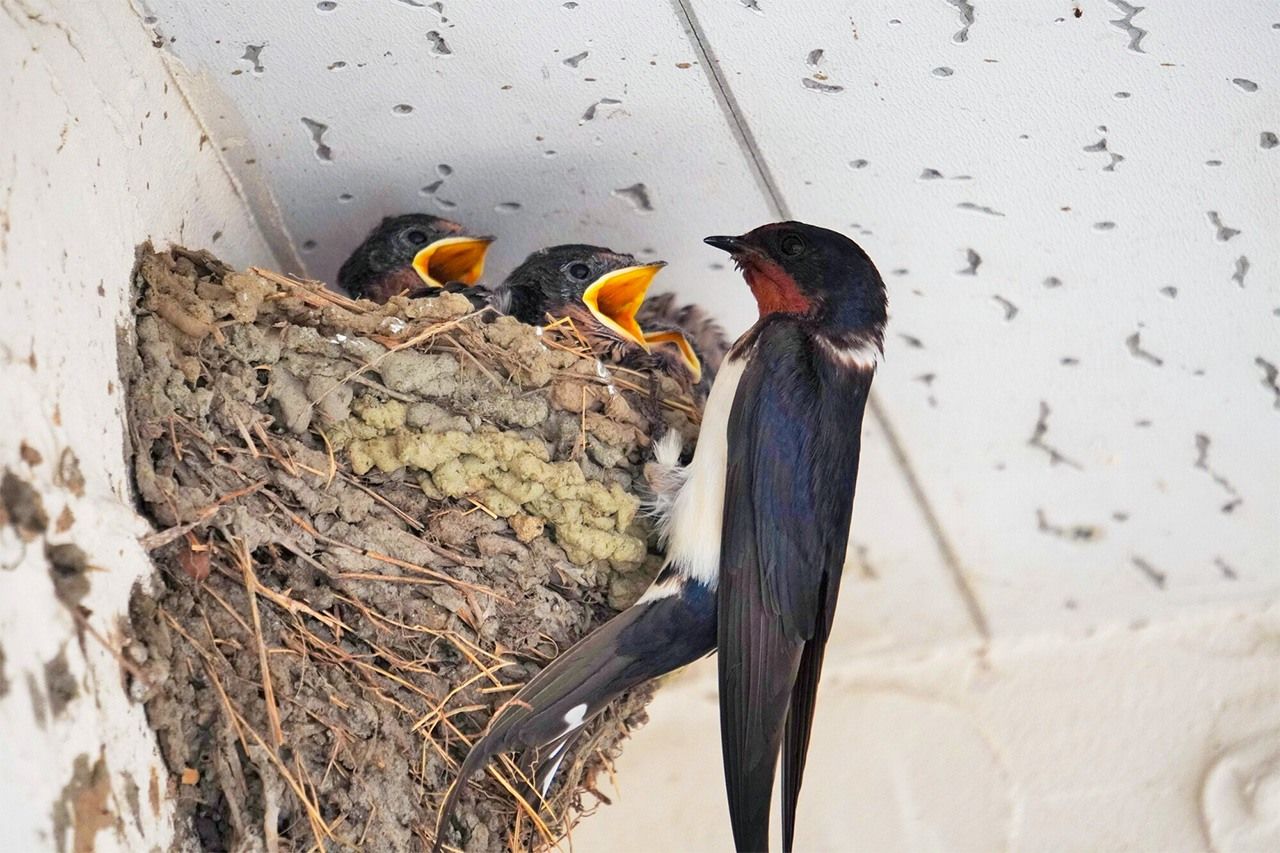
Swallows nesting on a house. (© Pixta)
Dandelions
Dandelions are vigorous flowers, often seen growing through cracks in the concrete. In Japan, there are both native and non-native species. The native varieties require pollination by bees or other insects, and only flower from March through May.
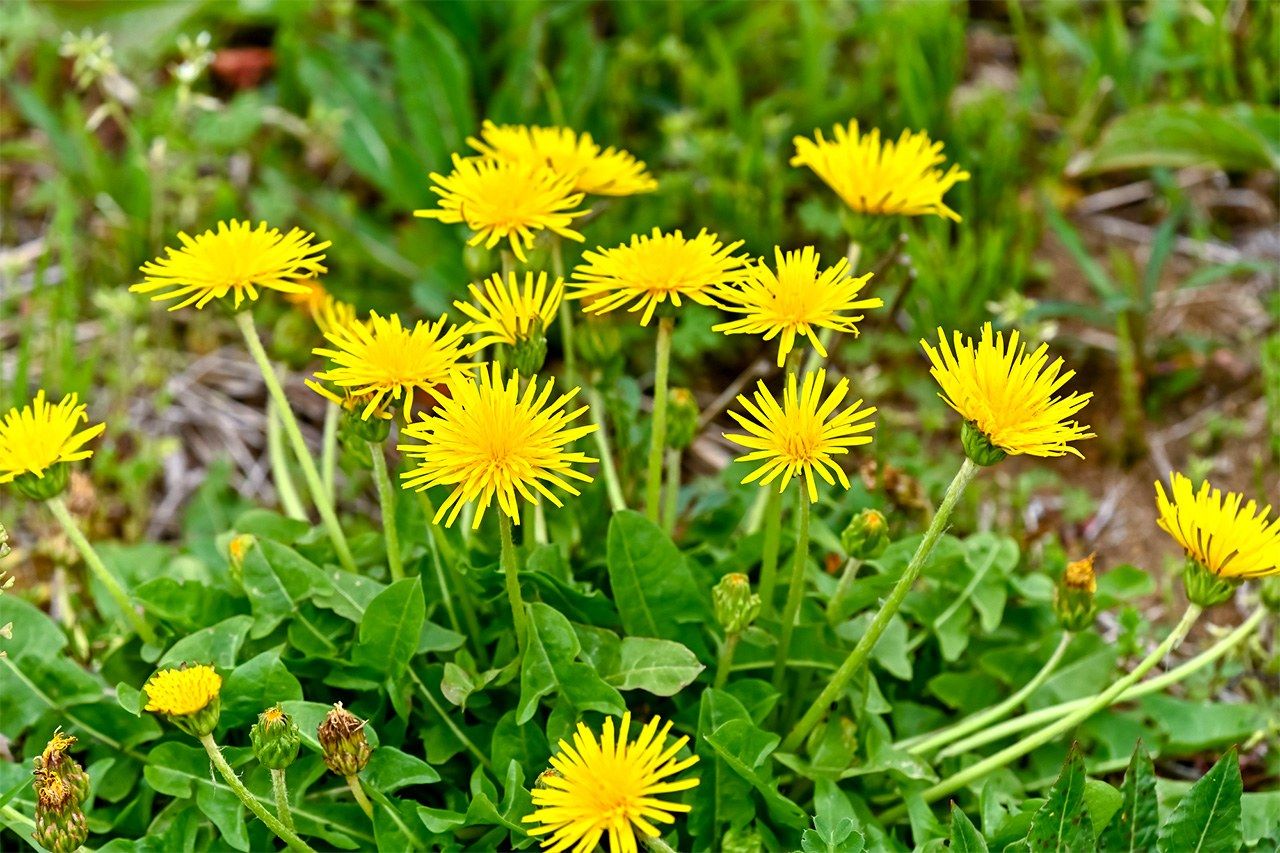
Native Japanese dandelions. (© Pixta)
Hatsuniji (First Rainbow)
Hatsuniji describes the first rainbow seen after the beginning of spring. Although niji or “rainbow” is a seasonal word associated with summer, hatsuniji is a term used in late spring.
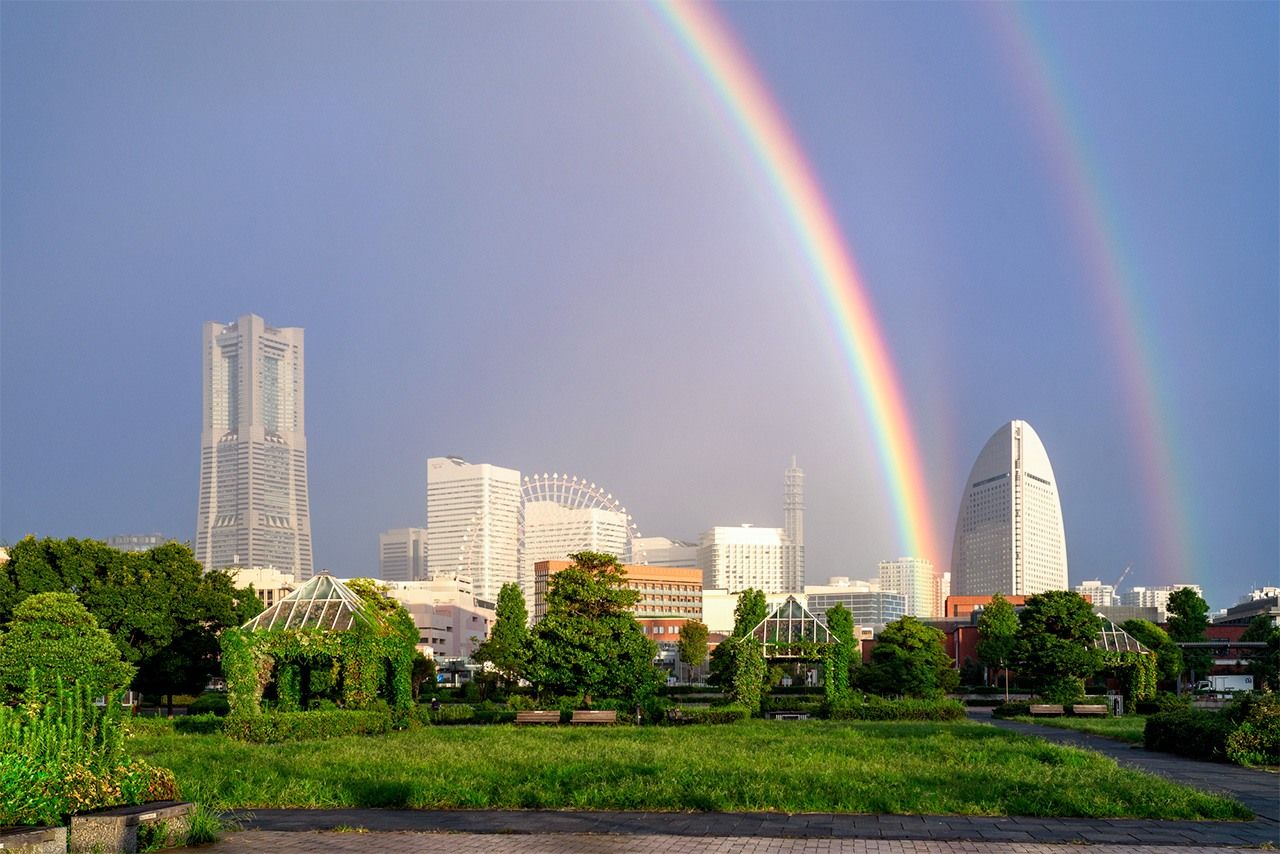
A rainbow over Minatomirai, Yokohama. (© Pixta)
Udo and Asparagus
Both udo, a popular wild vegetable, and asparagus are in season at this time of year. Udo has been cultivated since the Edo period. The tips are popular in tempura, while the stems are fried to make kinpira, or can be boiled and seasoned with mustard, vinegar, and miso.
Asparagus was introduced to Japan in the Edo period, and is said to be similar to udo. It comes in green, white, and purple varieties.
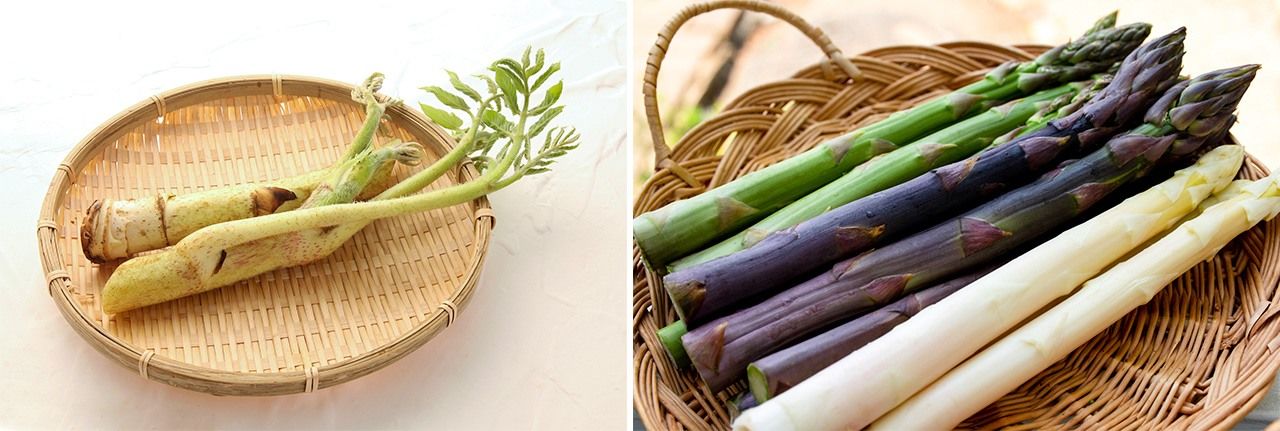
Udo (left) and three types of asparagus: green, white, and purple. (© Pixta)
Hotaruika (Firefly Squid)
With bodies five to seven centimeters in length, hotaruika (firefly squid) emit blue light from a bioluminescent organ. They inhabit the deep sea, between 200 and 600 meters underwater. Towards the end of their lives, they come close to shore to spawn, dying shortly after and being washed up onto the beach. They appear in large numbers from January to May in Toyama Bay, creating a spectacle that is designated as a special natural monument. Despite their firmness, the flesh is soft and has a certain sweetness. Hotaruika can be eaten as sashimi or pickled in soy sauce.
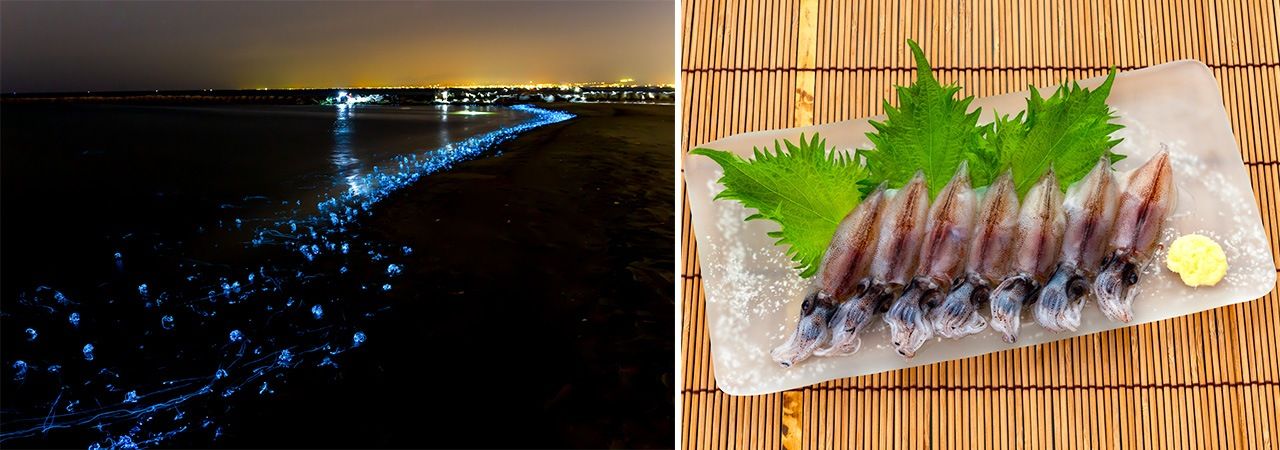
Glowing hotaruika shoals in Toyama Bay (left) and served as sashimi. (© Pixta)
(Supervised by Inoue Shōei, calendar researcher and author, Shintō priest, and guest lecturer at Tōhoku Fukushi University. Banner photo: Ladybug on a dandelion. © Pixta.)
